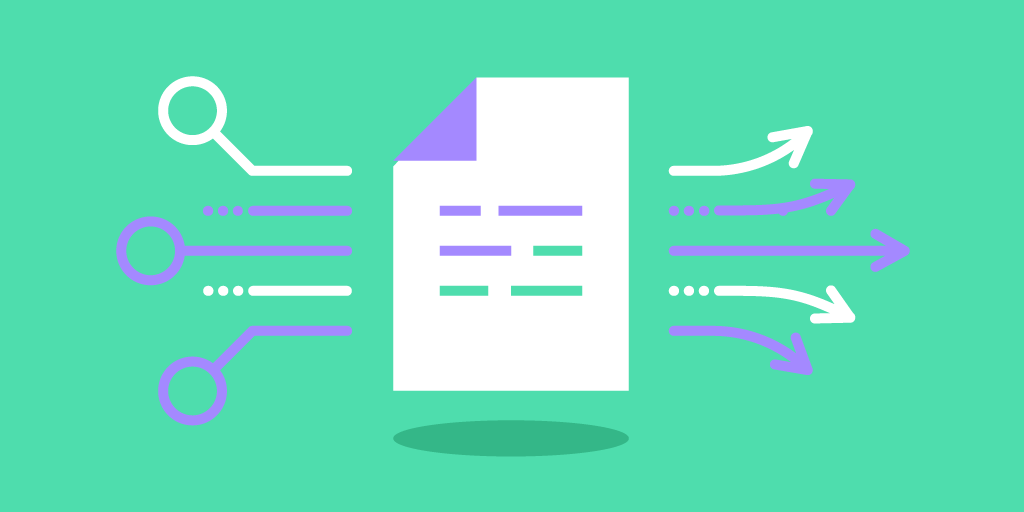Customer service may not be a race, but there is still a need for speed.
In other words, if you snooze, you lose.
But even if you don’t take this into account, serving people faster simply nets you better sales results. The more customers you can serve in the same timeframe, the better.
Now, each industry has their own list of “family recipes” when it comes to delivering time-sensitive customer service.
But there are also many common sense tactics that can be applied to any business and result in faster service.
Join us as we discuss 10 tips for improving the speed of service and achieving greater customer satisfaction.
1. Start the service process as soon as possible
According to the study on customer’s perceived value of waiting time, any waiting can be divided into three separate stages:
Pre-service: Customer is in line waiting to make an order.
In-service: Customer is at the counter, gives his order to the employee and pays.
Post-service: Customer waits for their order to be ready
Although preceding the actual service process, pre-service influences the most how customers score the service quality.
Here’s an example: one customer has waited in the line for 10 minutes before ordering a cup of coffee, and another has waited as long to have his already-ordered coffee prepared.
Will they be equally satisfied with their service?
The answer is no, because the first customer, even if his or her order is fulfilled immediately, will feel that subjectively, his wait was longer.
Researchers have found that perceived wait times feel longer than actual wait times. A five-minute queue in an oppressive waiting room can feel draining.
That’s why it’s harmful to think of queues as anything other than a part of your service. As soon as customers get to feel involved in the servicing process, the wait effectively ends.
Apple knows it like no one else.
Carmine Gallo, describing his experience of going to an Apple Store, said that despite waiting eight minutes before speaking to a manager, never felt frustrated or uncared for. Why?
Because at every point, he was engaged by staff members.

Read more about the four stages in which Apple tackled Gallo’s wait
Apple employees are trained to “reset internal clocks” — by checking in with customers and providing frequent updates, the latter never feel as though they are truly waiting.
2. Self-service is key
Self-service is not just a word we like to throw around to sound smarter; self-service is one of the biggest competitive differentiators right now.
This is true of customer support, where customers increasingly prefer to solve issues on their own over contacting an agent, and this is equally true of customer service.
84% of consumers have used a self-service channel in 2016, with 91% of consumers admitting they would use a self-service channel.
Delivering customer experience on time and at scale is difficult without letting customers solve problems on their own. Self-service gives customers agency, confidence and autonomy.
The process of checking in is a microcosm of that. Rather than waste your labor resources to manage every individual visitor by hand, you should focus on giving the customer ample resources to manage on their own.
Self-service check-in, which is usually done via check-in kiosks or online means, eliminates the need to go to the service desk and manually fill in sign-in sheets and other forms.
In other words, self-service check-in is the fastest and most cost-effective way to check in for service.
3. Segment your service into different service lines
To help your queues move along faster, break them down into different, smaller service categories.
Instead of a single line for customers who seek information, technical support and help with payment, you can have three separate ones.
This helps greatly speed up the process and eliminates the confusion on the staff’s side of customer service.
With a digital-based queue system, you don’t even need to have these lines be physical. They can be all part of the same general queue, but as the turn of each customer arrives, they will be invited to the respective service desk.
This way, you still maintain the FIFO (first-in-first-out) principle while achieving greater efficiency at serving individual customers with specific needs.
Better yet, you can have a multi-step check-in process, with different branching paths accounting for the customer’s specific needs.

A branching service flow allows you to create parallel processes that trigger upon specific inputs during the check-in. Upon completion, it adds the customers to the relevant line.
With a digital queue system, you can edit and update the lines in real time, with just a couple of clicks.
4. Delegate the customer to the right service representative
A 2018 Oracle survey found that 77% of consumers think inefficient customer service worsens their quality of life. Moreover, most consumers polled said that the ability to connect immediately to the relevant service agent would improve their experience.
Sometimes a customer may ask for a specific clerk that they feel could better help them — for example, they can talk in the customer’s preferred language.
Or, sometimes you spot a customer who has clearly made a mistake and joined the wrong line.
In both cases, sending such a customer to the back of the correct queue would only waste their time. It would make them that much likelier to abandon your business entirely.
That’s the objective weak point of physical lines — their innate inflexibility.
Now, the advantage of a digital queue management system is that it allows you to triage customers on the fly, without ever disrupting the experience.
Without the said customer noticing, no less.
Let’s look at the way we do it in Qminder. When servicing customers, you may notice a list of additional calling options beside the Call visitor button.
One of these calling options is Assign to, which lets you assign any visitor to another clerk.

It’s simple: you select Assign to and click on the specific colleague’s name. This employee will then receive a notification via Qminder dashboard.
NB: You need to make sure that your browser allows desktop alerts from Qminder.
Connecting a customer with the relevant associate powers up your response strategy. After all, great customer service is all about right people in the right place at the right time.
5. Make queuing rules fair
As we’ve outlined above, perceived duration of waiting has a bigger impact on consumer satisfaction than the actual wait time.
Perceived wait times play a big role in triggering specific negative customer behaviors. Queuing theory describes three such behaviors of consumers standing in line:
Jockeying: also known as queue-jumping, involves people switching to a different line in an effort to reduce their waiting time.
Balking: a behavior of consumers who decide to leave the location without joining the queue at all.
Reneging: involves customers joining the queue but deciding to leave after some time.
These behaviors only occur when the rules of queuing are unclear or seen as unfair.
Doesn’t it get your blood boiling when someone comes later than you and ends up being served before you?
In the words of sociologists Sasser, Olsen, and Wycoff, “The feeling that somebody has successfully ‘cut in front’ of you causes even the most patient customer to become furious.”
But what makes queues “fair”, exactly? It’s mostly about their conformity to the first-come-first-served model of service (sometimes referred to as first-in-first-out, or FIFO).
FIFO works exactly as the name implies: people who join the queue earlier expect to be served sooner than those who joined after. It is the most reliable model when it comes to queue fairness, as:
Its rules are simple to follow.
All potential violations are observable.
Even in the case of VIP queues, where a specific group of customers get special privileges, queuing can be seen as fair as long as the rules are laid out clearly.
6. Keep the customer informed
This section is super easy: give customers clear queuing information that will help them estimate their wait time.
Here’s why it’s effective: this reduces their level of anxiety caused by the uncertainty of waiting.
This is purported by what we call the psychology of waiting, which states that explained waits are shorter than unexplained waits.
You can achieve that via a waitlist displayed on a TV screen or digital signage. This waitlist shows a list of customers currently waiting, updated in real time.
But that’s only one, albeit an important, part of the equation.
Whenever there is a delay, a customer needs to know that there is one as well as be informed about the reason for this delay.
Otherwise, lack of explanations will lead customers to become angry, anxious or a mixture of both. Worse yet, they may spread their tale of woe to 15 or more other potential customers, costing you a fortune in lost sales opportunities.
Eight out of ten customers say they would switch to a competitor if they experience poor customer service. This number is greatly inflated by many businesses’ unwillingness to keep their customers in the loop.
7. Underpromise, overdeliver
Connected with the previous point, you should take a cue from restaurants which tend to overshoot when making their expected waiting time expectations.
If a waiter at a restaurant says your food will be prepared in about 20 minutes, but then comes to your table with meals in hand 10 minutes later, wouldn’t you feel special?
Now, if the waiter was precise in his estimations and said “10 minutes” right away, meeting this expectation would feel ordinary. The restaurant did exactly as it promised, yet it doesn’t seem as special.
A call-center study analyzed 100,000 calls and found that waits that were shorter than expected had a small positive impact on customer experience: “Although an optimistic estimate may reduce upfront abandonment rates, that boost isn’t worth the negative experience customers will have when they end up waiting longer than expected.”
Of course, the mantra “underpromise and overdeliver” doesn’t mean that you have to set unreasonable expectations on purpose, just to knock them out of the park.
But it pays to be more pessimistic when giving wait time estimates.
8. Keep the customer busy
Another bullet point from the study on the psychology of waiting says, unoccupied time feels longer. That is to say, when customers have something to do while they wait, time goes by faster.
This is why waiting rooms have magazines lying around and provide free WiFi. This is also why the example of Apple employees tackling the customers that we’ve mentioned earlier is so effective.
You can provide distractions by, for example, displaying content on TV and digital signage. Another option is to not force the customer to actually physically stay on the spot.
Customers can find distractions on their own, as long as they’re free to roam around. Virtual queue management has the advantage of not needing the customer to stand in line.
All you need is a system of time-bound notifications. Sending automatic SMS messages to your customers helps update them on the amount of time left before the turn arrives.

A surprising benefit of this arrangement is that customers with freed-up time will likely invest this time into browsing your store, leading them to impulse purchases.
In short, keeping visitors unburdened literally helps with upselling and cross-selling.
9. Be careful of appointments
While bookings look good on paper, all it takes is one appointment to run late, for the entire schedule to start lagging.
Think of the industry where appointments are the norm — healthcare. It perfectly exemplifies how broken the system of bookings is.
In a CNN report, Dr. Anthony You explains how a single patient can cause a physician to run 30 minutes behind by asking questions after the end of the appointment. This, in turn, eats into the next patient’s appointment time.
Another concern is patients arriving late, with one third of patients showing up at least 10 minutes later than expected. That’s nothing to say of no-shows, which are abundant and cost the US healthcare system more than $150 billion a year.
Both of these problems may be manageable on their own, but when compounded throughout the day, the numbers escalate.
Appointments were designed to avoid unpredictability, but their very nature makes them less efficient than walk-ins that you can manage via a queue system.
10. Track your performance metrics to improve service quality
In queue management, like in other things, preparation is half the battle won.
If you learn from past interactions with customers, you can make future experiences better, more meaningful — and faster.
Whichever queue management system you decide to implement, make sure that it integrates service intelligence.
(Service intelligence is, of course, a software-driven process for analyzing service performance data to help make business and its employees make informed decisions.)
In essence, service intelligence helps you find trends and outliers, make changes to your customer service strategy, and compare your performance over time.
There are three main areas of improvement when it comes to delivering faster customer service:
Optimizing staffing and shifts. This includes figuring out staff expenditures, correctly predicting peak hours and foot traffic to manage capacity, and learning which service types are more popular.
Identifying staff training needs. Find which employees have slower response and service times, create a plan to help them improve, and reward employees who are overperforming.
Finding inefficiencies and bottlenecks. Improve operational process and achieve better throughput by understanding average wait times and service times, peak hours and foot traffic trends.
Speed is one of the crucial components upon which the quality of customer service is decided.
Putting everything on autopilot doesn't cut it. You have to actively invest your effort into delivering fast customer service if you want to make a difference.
Luckily for you, Qminder has been built with the express purpose of providing quick service.
If you want to see what truly fast customer service looks in action, sign up for a 14-day free trial of Qminder. We'll be glad to show you the ropes.






